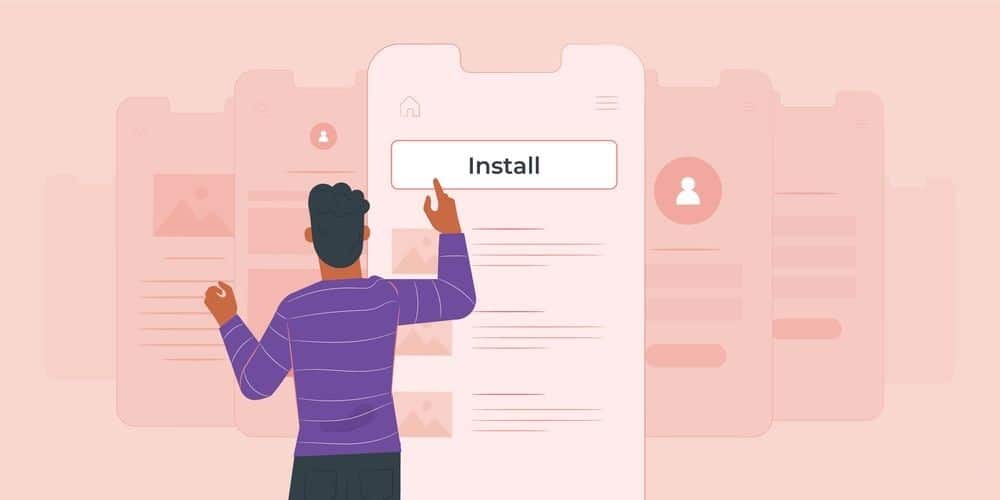Mobile Optimization Musts: How to Make Your Website a Hit on Any Device
In today’s world, it’s crucial for businesses to have a website that is easily accessible and user-friendly on any device. With the proliferation of smartphones and tablets, more and more people are accessing the internet on the go, and if your website isn’t optimized for mobile devices, you risk losing potential customers. Mobile optimization is no longer a nice-to-have, it’s a must-have. If your website isn’t mobile-friendly, you’ll lose out on a significant portion of your audience.
As more and more people rely on their smartphones and other mobile devices to access the internet, it’s increasingly important for businesses to ensure that their websites are optimized for mobile. If your website isn’t mobile-friendly, you could be missing out on a significant portion of your target audience.
In this article, we’ll go over some of the key considerations for making your website a hit on any device.
Table of Contents
Maximizing Your Mobile Reach: The Importance of Optimizing for All Devices
Mobile optimization is crucial for a number of reasons. First and foremost, Google has announced that it will favor websites that are mobile-friendly in its search results. This means that if your website is not optimized for mobile, it could be ranked lower in search results, leading to fewer visitors and potential customers.
In addition to its impact on search engine rankings, mobile optimization is important for the user experience. If a website is difficult to use or navigate on a mobile device, visitors are likely to leave and go to a competitor’s site. This can lead to high bounce rates and a decrease in conversions.
Jake Smith, Managing Director of Absolute Reg LTD, emphasizes the importance of mobile optimization for businesses:
“In today’s world, having a mobile-optimized website is not a choice, it’s a necessity. With the majority of internet users accessing the web on their phones, it’s crucial that businesses make it easy for these users to find and interact with their website.”
Practical Tips to Make Your Website Mobile-Friendly
Mobile optimization is essential for any business looking to thrive in today’s digital landscape. With the majority of internet users accessing the web from their smartphones, it’s crucial to ensure that your website is optimized for mobile devices. In this article, we’ll explore some of the key musts for mobile optimization, including how to make your website a hit on any device.
First and foremost, it’s important to understand that mobile optimization is about more than just making your website look good on a small screen. It’s about ensuring that your website is easy to use and navigate, loads quickly, and provides a seamless user experience. Here are a few key musts for mobile optimization:
1. Mobile-Friendly Makeover: How Responsive Design Can Benefit Your Website
A responsive website is crucial for mobile optimization. According to Oliver Goodwin, Director & Marketing Strategist of Synthesys.io.
“A responsive website is one that adjusts to fit the screen size of the device it’s being viewed on. This means that your website will look and function just as well on a smartphone as it does on a desktop computer.”
Using a responsive design ensures that your website is easy to use and navigate no matter what device it’s being accessed from.
2. Picture Perfect: Tips for Optimizing Images for Mobile Devices
Large, high-quality images can take a long time to load on mobile devices. To ensure that your images aren’t slowing down your website, you’ll want to optimize them for the web. This means compressing your images to reduce their file size and using appropriate image file formats (such as JPEG or PNG). Remember to try the fastest vps hosting to provide more optimized website performance.
3. Speedy Success: Strategies for Improving Mobile Loading Times
The faster your website loads, the better user experience you will provide to your visitors. Slow-loading websites can drive users away, leading to a high bounce rate. High bounce rates can negatively affect your search engine rankings, as Google prefers websites that provide a good user experience.
According to Pete Chatfield, CEO of Household Money Saving, “To ensure fast loading times, you can optimize your images by compressing them and using appropriate image file formats such as JPEG or PNG. You can also minify your code, which means removing unnecessary characters and spaces to reduce the file size. Leveraging caching can also help improve loading times, as it stores certain elements of your website on the user’s device, allowing them to load faster on subsequent visits.”
4. Connect in a Click: The Importance of Click-to-Call Buttons for Mobile Users
Many mobile users prefer to call businesses directly rather than filling out a contact form. To make it easy for users to get in touch with you, consider adding click-to-call buttons to your website.
5. Voice-Activated Visibility: Optimizing Your Website for Voice Search
More and more users are using voice search on their mobile devices to find what they’re looking for. To optimize your website for voice search, you should include long-tail keywords and natural language phrases in your content. You should also make sure that your website is easy to read aloud, as voice assistants will read your website out loud to users.
6. Navigate with Ease: Tips for Creating a User-Friendly Mobile Menu
On a small screen, it’s essential that your website’s navigation is easy to use. Bram Jansen, Chief Editor of vpnAlert, recommends using a clear and concise menu and organizing your content in a logical way. Hamburger menus can also be useful for hiding non-essential links and making it easier for users to find what they’re looking for.
7. AMP Up Your Mobile Game: How Google AMP Can Benefit Your Website
Accelerated Mobile Pages (AMP) is a Google-backed project that aims to improve the loading speed of web pages on mobile devices. By using AMP, you can ensure that your website loads quickly and smoothly on mobile devices.
Now that we’ve covered some of the key musts for mobile optimization, let’s take a look at a few examples of businesses that have successfully optimized their websites for mobile.
- One great example is the fashion retailer ASOS. Their mobile website is fast-loading, easy to navigate, and features a clean and modern design. They’ve also implemented AMP to ensure that their pages load quickly on mobile devices.
- Another great example is the home improvement retailer Home Depot. Their mobile website is responsive, fast-loading, and features a clear and concise menu. They’ve also implemented click-to-call buttons to make it easy for users to get in touch with them.
- Finally, we have the fast food chain McDonald’s. Their mobile website is responsive, fast-loading, and features an intuitive menu that makes it easy for users to find what they’re looking for. They’ve also implemented click-to-call buttons and integrated their website with their mobile app to provide a seamless user experience.
Case Studies from Experts in the SEO World
Now that we’ve gone over some of the key considerations for mobile optimization, let’s look at a few examples of businesses that have successfully made their websites mobile-friendly.
Case study 1: Model Chic
Model Chic is a fashion and lifestyle website that saw a significant increase in traffic and conversions after optimizing its website for mobile. According to Raine Gui, Director of Model Chic.
“Before we optimized our website for mobile, we were seeing a high bounce rate and low conversion rate on mobile devices. After optimizing our website, we saw a 50% increase in traffic from mobile devices and a 25% increase in conversions.”
Case study 2: TheFab20s
TheFab20s is a Personal Development and Lifestyle website that was struggling to attract mobile visitors. According to Founder Claudia Torres, “our website was designed for desktop and wasn’t very user-friendly on mobile devices. We knew we needed to make a change if we wanted to stay competitive.” The team at TheFab20s decided to invest in a responsive design, and the results were dramatic.
“After we launched our new, mobile-friendly website, our mobile traffic increased by over 50% in just a few months,” says Torres. “Not only that, but our overall traffic also increased because our website was now easy to use on any device.”
Case study 3: Digital Marketing Agency Consultant
Digital Marketing Agency Consultant is a company that helps other businesses with their online marketing efforts. Founder Michael Galindo realized that many of his clients were losing potential customers because their websites weren’t mobile-friendly.
“I started seeing firsthand the impact that a poorly designed website could have on a business,” he says. “That’s when I knew we needed to focus on mobile optimization for our clients.”
The team at Digital Marketing Agency Consultant began offering mobile optimization services and saw a significant increase in client retention and revenue. “Our clients were able to reach a wider audience and convert more visitors into customers.”




